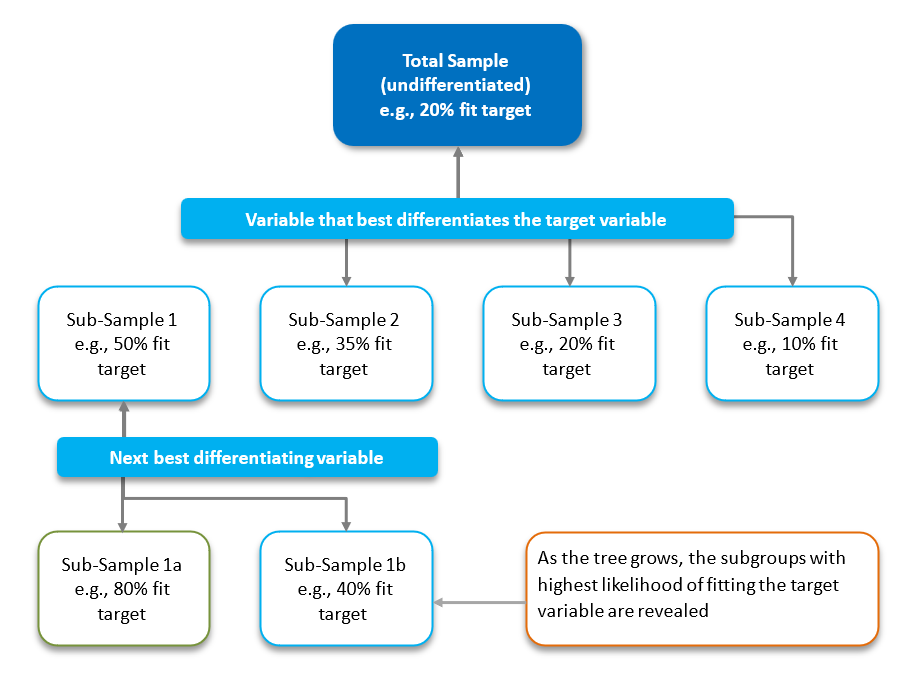Decision Tree: Uses to Analyze Markets or with Targeted Advertising
Typical Applications Of Decision Trees
Market Analysis: determine which variables, such as geography, price, customer characteristics, are associated with sales or particular customer behaviors
Targeted Advertising: determine which demographic groups have the highest response rate; use this information to maximize response to future mailings
What Is CHAID?
CHAID (Chi-squared Automatic Interaction Detector) is one of the techniques in the analysis area called “classification systems” (sometimes also known as “decision trees”).
All these techniques examine the fields in a database in order to find the best classification or prediction by splitting the data into subgroups. The data is used to build rules that you can use to classify old or new cases with maximum accuracy.
The process begins with one root node that contains all of the observations (cases) in the sample. As you drop down the tree, the data branch into mutually exclusive subsets of data.
Of the various classification algorithms, the most common are CHAID, CART (Classification and Regression Trees), and QUEST (Quick, unbiased efficient statistical tests).
All algorithms do basically the same thing – examine all of the fields of your database to find the one that gives the best classification or prediction by splitting the data into subgroups. The process is them applied repeatedly to subgroups to sub-subgroups, and so on, until the tree is finished (as defined by certain stopping criteria)
What Is The Output?
As the tree “grows” from top to bottom (see below), the nodes show where the best “target” exists.
Gain
Response rate in a targeted subgroup – shows the percent who hit the target.
Can also be shown as an indexed value with a baseline of 100
Uses
Segmentation: identify cases likely to be members of a particular class
Stratification: assign cases into one of several categories (e.g., high, med, low)
Prediction: create rules and use them to predict future events
For more information, contact us at contactus@elucidatenow.com.

